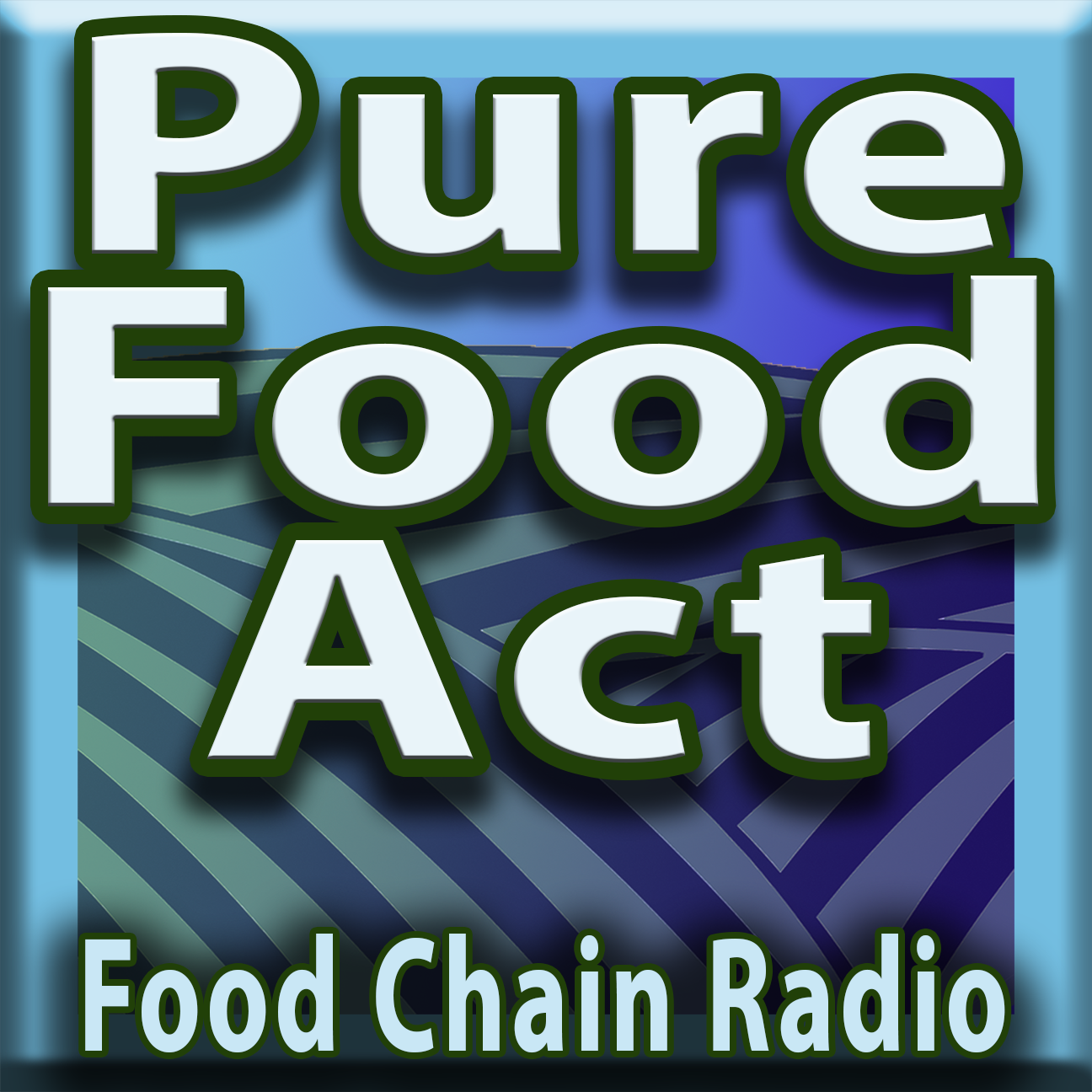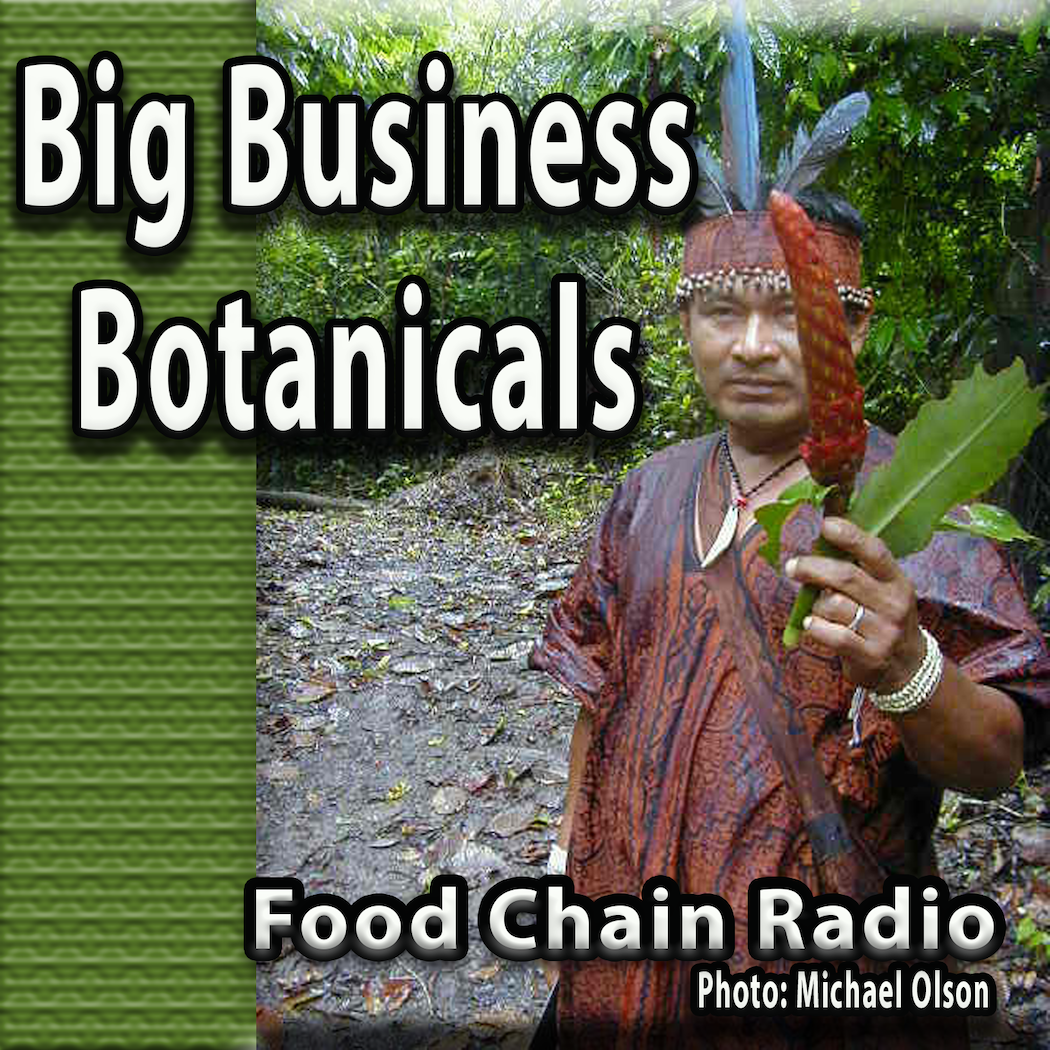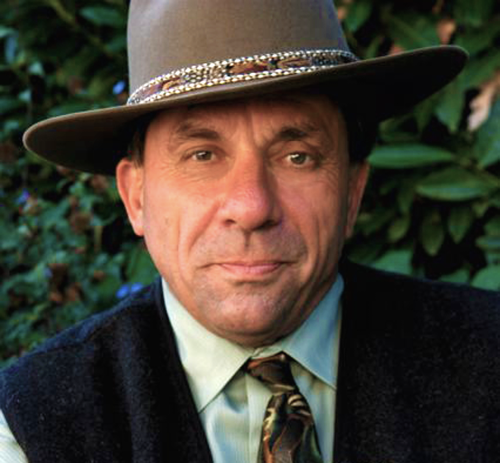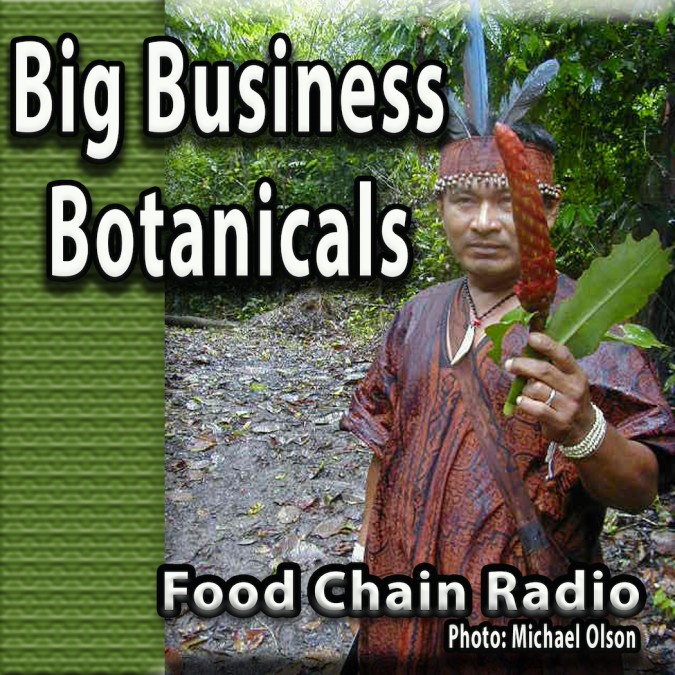
Wildlife Apocalypse
February 10, 2021
Pure Food Act
February 26, 2021GUEST: Ann Armbrecht, PhD, Author The Business of Botanicals
A few years back I had the opportunity to visit the Shipibo Indians who live along the banks of the Rio Ucayali, which is the Peruvian headwater of the great Amazon River.
I was a guest of the Amazon Herb Company, which contracted with the Shipibo to sustainably harvest medicinal herbs from the rainforest. After they were harvested, the herbs were boated up river to Pacullpa to be concentrated and bundled for shipment to the States, where they were further concentrated and packaged into consumer-ready containers for shipment to people throughout the country.

Michael Olson Food Chain Radio – Big Business Botanicals
When we finally reached the Shipibo village, after one very long boat ride, I was amazed at how tropically beautiful it was. And the Shipibo were every bit as beautiful. We drank, danced and feasted on food harvested from right there. And that food was delicious, even down to the last roasted piranha.
The big treat of the adventure, though, was a long herb-walk through the rainforest with a Shipibo “curandero.” I took a photo of him as he offered up a communal glass jar filled with a jungle juice I later learned was called “Ayahuasca.” The photo of the Ayahuasca offering was perfectly in focus, but the curandero holding the jar was a complete blur.
What made the botanicals from the Amazon so attractive to those doing the business was their potency. The Amazon Basin is an extremely competitive environment for all forms of life. When life passes in the Basin, death does not linger. The remains of what passed is immediately disassembled and taken back up into the living canopy. You can actually see this happening in real time when a leaf falls to the ground in front of you. To survive in the Amazon Basin, all forms of life must develop very potent defense mechanisms, and the curandero know how to use the defenses of various plants to help the Shipibo people survive.
But back here in what we call civilization, most medicinal herbs are not grown in challenging competitive environments. On the contrary, many, if not most, medicinal botanicals are grown in large industrialized farms by farmers with powerful defensive weapons to protect them from danger. That leads us to ask:
COMMENT BELOW: Is what is in the pill or potion worth all the dollars?
Tune in here, for the syndicated Michael Olson Food Chain Radio Show #1264 February 20, 2021 Saturday 9AM Pacific
Michael Olson’s Three Laws of the Food Chain
#1 Agriculture is the foundation upon which we build all our sand castles.
#2 The farther we go from the source of our food, the less control we have over what’s in that food.
#3 Cheap food isn’t! READ MORE





1 Comment
Hi Michael, I really enjoy your show in general, and this one about botanicals was great. I plan on getting the book. I wondered if you had considered interviewing Carin Fortin of Blossoms Biodynamic Farm. I know she and Del were on Think Local once. Their business seems to tie right into what you have been discussin g on this segment. Thanks, Leslie